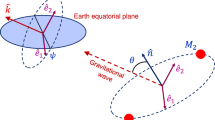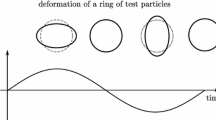Abstract
The resolution provided in 3D Doppler tomography is analyzed. The basis for correcting 3D tomographic structures taking into account the influence of the inclination of the structure on the geometry of the summarized transfer function (STF) used in the reconstruction is presented. The same resolution can be achieved along the axis of rotation and in the orbital plane of a system for an inclination of 54°44′. The positions of the centers of structural features in a tomogram should be preserved when correcting for differences in elongation along the main axes due to the difference in resolution along these axes. Examples of simulations used to estimate possibilities for 3D reconstruction in the central sector of inclination angles, and also for values of these angles near the periphery, are presented. A comparison with results obtained using the radioastronomical approach (RA) and the filtered back-projectionmethod testifies that the latter leads to appreciably larger distortions during a 3D reconstruction. The effectiveness of considering two inclinations, as can be realized for precessing systems, is indicated; this can also be useful in other practical applications.
Similar content being viewed by others
References
M. I. Agafonov and O. I. Sharova, Astron. Rep. 57, 7 (2013).
M. I. Agafonov and O. I. Sharova, Radiophysics and Quantum Electronics 48, 329 (2005).
M. I. Agafonov, M. T. Richards, and O. I. Sharova, Astrophys. J. 652, 1547 (2006).
M. I. Agafonov, O. I. Sharova, and M. T. Richards, Astrophys. J. 690, 1730 (2009).
M. T. Richards, O. I. Sharova, and M. I. Agafonov, Astrophys. J. 720, 996 (2010).
M. T. Richards, M. I. Agafonov, and O. I. Sharova, Astrophys. J. 760 (2012).
O. I. Sharova, M. I. Agafonov, E. A. Karitskaya, N. G. Bochkarev, S. V. Zharikov, G. Z. Butenko, and A. V. Bondar, in From Interacting Binaries to Exoplanets: Essential Modeling Tools, Ed. by M. Richards and I. Hubeny, Proc. IAU Symp. 282, 201 (2012).
R. Gordon, inIAU Colloquium no. 49 on Image Formation fromCoherence Functions in Astronomy, Ed. by C. van Schooneveld (Dordrecht, Reidel, 1979; Mir, Moscow, 1982), p. 306.
K. T. Smith, D. C. Solmon, and S. L. Wagner, Bull. Am.Math. Soc. 83, 1227 (1977).
Author information
Authors and Affiliations
Corresponding author
Additional information
Original Russian Text © M.I. Agafonov, M.Yu. Sidorov, 2014, published in Astronomicheskii Zhurnal, 2014, Vol. 91, No. 6, pp. 481–489.
Rights and permissions
About this article
Cite this article
Agafonov, M.I., Sidorov, M.Y. Source inclination and the resolution provided in 3D Doppler tomography. Astron. Rep. 58, 406–414 (2014). https://doi.org/10.1134/S1063772914060018
Received:
Accepted:
Published:
Issue Date:
DOI: https://doi.org/10.1134/S1063772914060018




